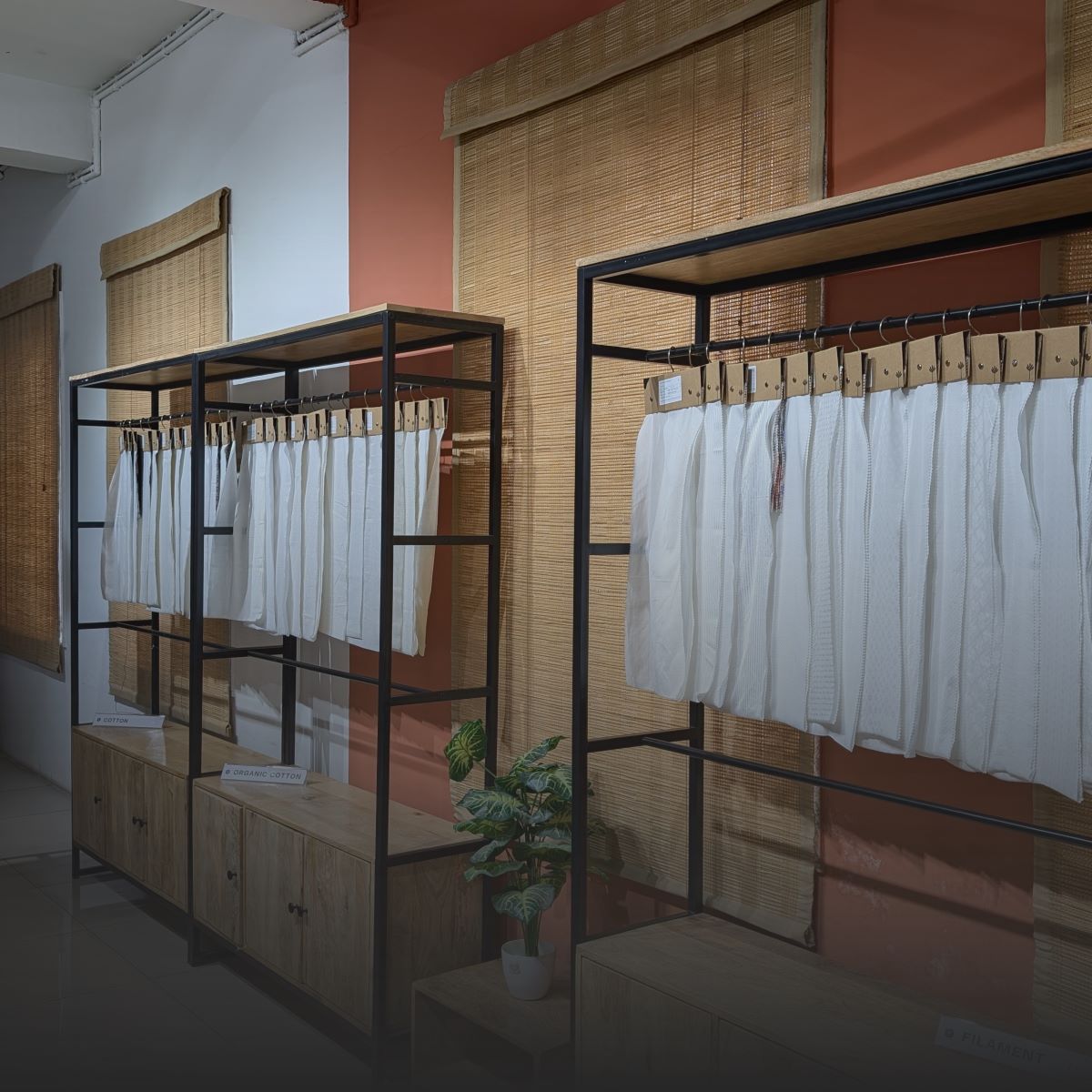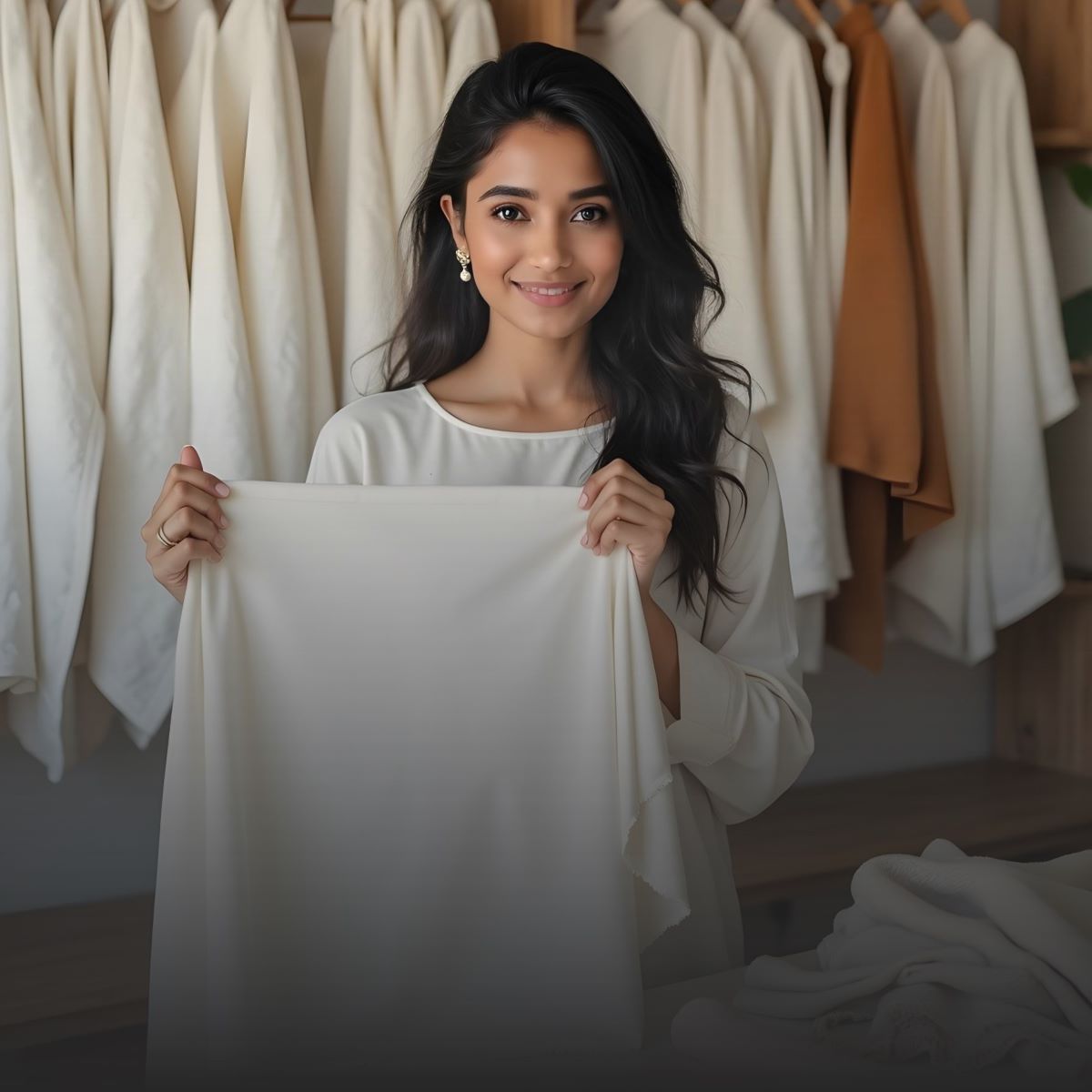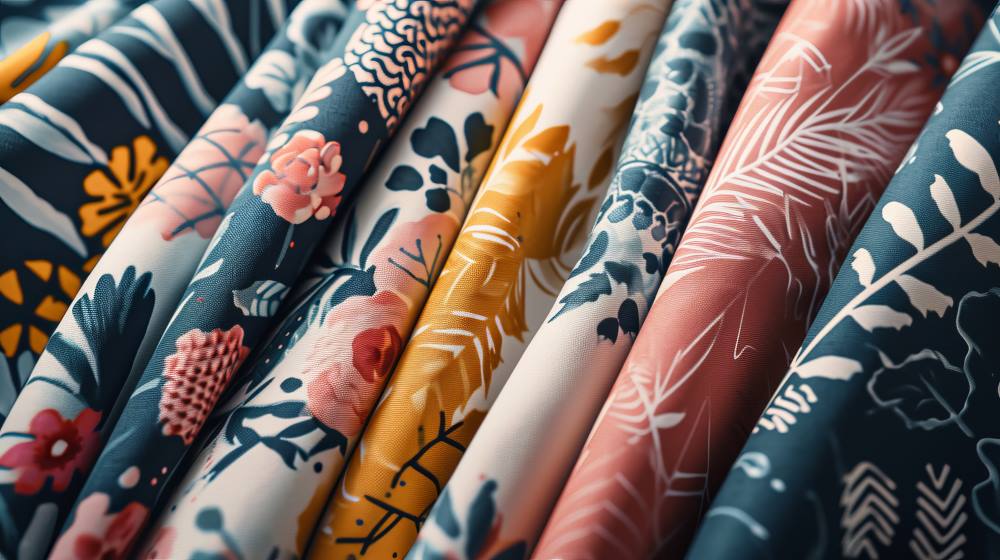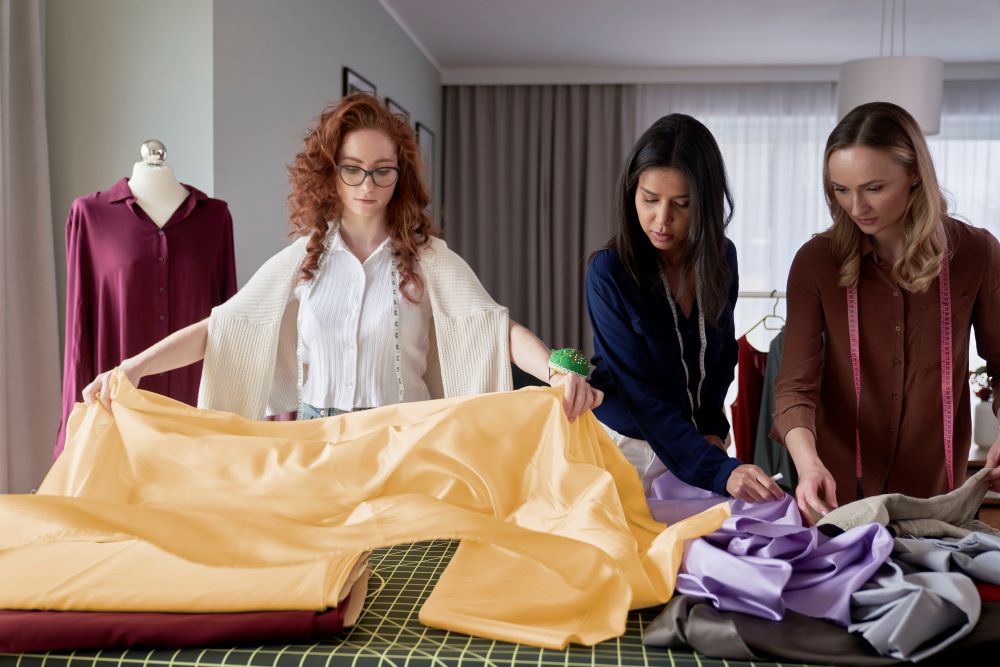This blog explores the most influential fabric trends forecasted to dominate the North American fashion scene in 2025. From runway insights across Canada and the United States to practical buying decisions for designers, brands and consumers—this guide is tailored to provide clarity and inspiration.
Top 10 Fabric Trends Shaping North American Fashion in 2025
In 2025, North American fashion is embracing fabrics that combine comfort, elegance and statement-making textures. Key trends include sheer fabrics, bold animal prints, airy florals, revived polka dots, fuzzy faux furs, tactile knits and vintage-inspired boho weaves. These choices reflect a growing preference for breathable materials, layered transparency, ethical faux options and nostalgic patterns that carry visual and cultural depth.
1. Sheer Fabrics – Elegance in Transparency

Sheer fabrics, including organza, mesh, lace and tissue-fine silk, are a major trend in North American fashion for Spring/Summer 2025. They offer a breathable, fluid and visually striking aesthetic that’s ideal for warm-weather layering and romantic styling.
What’s the Trend?
In 2025, sheer is not a subtle detail—it is a design statement. Designers across the United States and Canada are embracing ultra-sheer textiles to create ethereal looks that blend elegance with sensuality. From visible bras beneath wispy overlays to see-through mesh skirts, this trend reflects a modern approach to body positivity, bold layering and breathable luxury.
Where It’s Appearing
-
Spring/Summer Runways: Chanel, Jacquemus, Coperni, Stella McCartney and Alexander McQueen led the sheer revival with lace skirts, overlay gowns and pastel co-ords.
-
North American Fashion Weeks: Transparent dresses and sheer paneling were key elements in both U.S. and Canadian designer collections.
- Retail Ready: Lightweight see-through fabrics are entering ready-to-wear lines, especially for resortwear, occasionwear and modern bridal looks.
Why This Trend Matters in North America
-
Climate Relevance: In warmer U.S. and Canadian regions, sheer fabrics offer coolness without compromising sophistication.
-
Consumer Behavior: Younger consumers (especially Gen Z) are embracing transparency in fashion—both literally and socially.
- Styling Versatility: These fabrics transition well from day to night and offer options for layered, breathable outfits during summer months.
2. Faux Fur – Softness with a Statement

Faux fur is trending in Fall/Winter 2025 as a luxurious, ethical alternative to real fur. In North America, designers are embracing plush textures in coats, collars and accessories to provide warmth, style and animal-free appeal.
What’s the Trend?
Faux fur is no longer just a cold-weather staple—it is a fashion statement. In 2025, major runway shows across New York, Toronto and other global cities confirmed that textured outerwear is in high demand. Designers are showcasing faux fur in bold colors, oversized silhouettes and rich trims, proving that comfort and ethics can coexist in modern fashion.
Where It’s Appearing
-
North American Runways: Brands like Michael Kors (New York) highlighted fluffy outerwear and faux fur stoles.
-
Retail Collections: Faux fur is being used in trimmed jackets, statement scarves and textural handbags.
- Fall/Winter Must-Haves: Expect to see teddy coats, fuzzy bucket hats and fur-accented capes becoming wardrobe essentials.
Why This Trend Matters in North America
-
Great for Cold Weather: Faux fur keeps you warm in cold parts of Canada and the northern U.S., making it practical for winter.
-
Ethical Choice: More people in North America want to avoid using animal products. Faux fur gives the same luxury look and feel without harming animals.
- Fits Many Styles: Faux fur works well with both casual and dressy clothes, adding warmth and style.
3. Animal Prints – Leopard Is the New Neutral

Animal prints, especially leopard, cheetah and zebra patterns, are trending in North American fashion for Fall/Winter 2025. These prints are being embraced as everyday neutrals, appearing in coats, dresses and accessories across designer and retail collections.
What’s the Trend?
Animal prints are no longer reserved for bold statements—they are being treated as core elements in 2025 wardrobes. Leopard print, in particular, is shown in structured coats, midiskirts and cardigans, often paired with neutral color palettes like black, camel and grey. Designers are using zebra, snakeskin and cheetah patterns across various silhouettes, from minimalist slips to detailed outerwear.
Where It’s Appearing
-
Runway Highlights: Khaite (USA), Versace, brought fierce energy to Fall/Winter 2025 with feline motifs and exotic prints.
-
Retail Integration: North American stores feature animal print coats, knits and dresses as seasonless wardrobe staples.
- Category Expansion: Beyond clothing, animal prints are also trending in bags, shoes and scarves.
Why This Trend Matters in North America
-
Style Meets Versatility: Animal prints can be paired with monochromes, denims or minimalist basics, making them highly versatile for U.S. and Canadian consumers.
-
Resortwear to Streetwear: These prints suit all seasons—lightweight printed fabrics for spring resortwear and layered jacquards for urban winterwear.
- Psychographic Appeal: North American shoppers seek prints that express personality. Animal patterns deliver boldness, confidence and a timeless edge.
4. Airy Florals – Lightweight Layers for Spring

In Spring 2025, florals will trend in North American fashion through lightweight layers, muted colors and sheer fabrics. Designers present florals in romantic silhouettes using breathable materials ideal for warm weather.
What’s the Trend?
Florals are evolving from bold prints to soft, layered designs that feel light and natural. In 2025, designers across the United States and Canada are embracing sheer floral fabrics, pastel palettes and multi-layered textures. These designs create an effortless, wind-swept look that fits both daytime events and outdoor occasions.
From Loewe’s hoop dress to Erdem’s midi florals with layered tanks, the focus is on movement, transparency and softness. The trend also extends to accessories, with floral bags becoming a key seasonal element.
Where It’s Appearing
-
Runway Highlights: Brands like Chloé, Loewe and Erdem showcased dreamy floral pieces layered over sheer bases in muted, nature-inspired tones.
-
Retail Collections: Floral-printed chiffons and voile fabrics are featured in dresses, blouses and wraps for spring events and casual wear.
- Accessories: 3D floral appliqués and embroidered blooms are trending on bags and scarves, adding texture and visual interest.
Why This Trend Matters in North America
-
Seasonal Relevance: Spring in both the U.S. and Canada calls for breathable, flowing garments. Sheer florals meet the need for comfort and elegance.
-
Styling Flexibility: These fabrics suit multiple categories—brunch dresses, wedding guest outfits and casual garden-party attire.
- Consumer Appeal: North American shoppers increasingly value clothing that blends style with ease. Lightweight florals offer soft femininity without sacrificing practicality.
5. Polka Dots – The Retro Print Reinvented

Polka dots are trending in 2025 as a reinvented classic in North American fashion. From oversized spots to subtle micro prints, polka dots are being featured in dresses, suits and swimwear across the United States and Canada.
What’s the Trend?
Polka dots are making a strong comeback in 2025 with updated interpretations and broader design appeal. No longer limited to vintage or novelty looks, polka dots now appear in sophisticated suits, evening dresses and layering pieces.
Designers are reimagining the dot with asymmetrical patterns, oversized placements and color variations, giving this nostalgic print a fresh, modern identity.
Where It’s Appearing
-
Runway Presence: Valentino, Carolina Herrera, Moschino and Acne Studios featured bold polka dot looks across their 2025 collections.
-
Retail Trends: In North American stores, polka dots are now visible on wedding guest dresses, silk midi skirts and modern swimwear.
- Print Diversity: Black and white remains a favorite, but new iterations include multicolor dots, tonal contrasts and metallic accents.
Why This Trend Matters in North America
-
Styling Versatility: Polka dots pair easily with minimalist, modern pieces or bold graphic styles—making them ideal for North American consumers who want timeless prints with personality.
-
Cross-Season Appeal: Lightweight dot fabrics work well in spring and summer, while structured versions are suited for layered fall outfits.
- Consumer Engagement: The playful yet polished nature of polka dots aligns with current market interest in reimagined classics.
6. Boho Fabrics – The Return of Free-Spirited Textiles
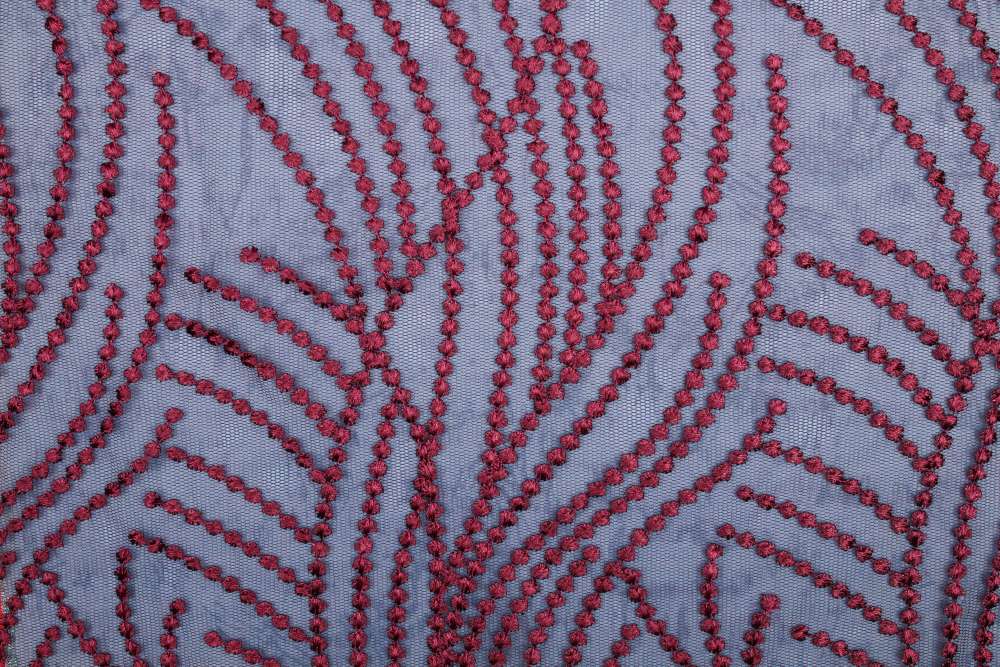
Boho fabrics are returning to the forefront of North American fashion in 2025. Featuring patchwork, tie-dyes, vegetal prints and embroidery, these textiles evoke artistic freedom, cultural roots and handmade appeal.
What’s the Trend?
Bohemian style is experiencing a strong resurgence in 2025. This revival is characterized by textiles with relaxed, expressive and handcrafted qualities. Runways featured vegetal motifs, embroidered trims, paisley prints and tie-dye textures across flowing silhouettes such as peasant dresses, caftans and babydoll minis.
Rather than focusing only on vintage appeal, the new wave of boho is more polished and wearable, blending nostalgic textures with modern tailoring.
Where It’s Appearing
-
Retail Translation: North American consumers will see boho elements in festival fashion, resortwear and artisanal-style collections.
- Fabric Features: Patchwork cotton, light voile, crinkled rayon and embroidered linens define the material language of the trend.
Why This Trend Matters in North America
-
Cultural Connection: The boho style matches North America's love for individuality, travel and handmade crafts, especially in places like California New Mexico.
-
Unique Look: Boho fabrics have rich textures and earthy colors that stand out among the many simple, minimalist styles in stores.
- Works All Year: These fabrics are great for warm weather and also perfect for layering during cooler seasons.
7. Fluffy Knits – Texture That Talks

Fluffy knits are trending in Fall/Winter 2025 as statement-making textures in North American fashion. With dramatic mohair, handwoven finishes and 3D fringes, knits are moving beyond basics into bold seasonal centerpieces.
What’s the Trend?
Knitted fabrics are being elevated in 2025 with an emphasis on texture, volume and visual impact. Designers are focusing on super-shaggy yarns, chunky weaves and allover fuzzy finishes to bring a new dimension to a familiar fabric form.
Unlike traditional Fair Isle or plain knits, this new wave of fluffy knits highlights craftsmanship and character. The use of dramatic silhouettes and fringe detailing turns sweaters, dresses and vests into focal points, not just functional pieces.
Where It’s Appearing
-
Designer Collections: Ganni, COS and By Malene Birger showcased fluffy textures on runways and lookbooks for Fall/Winter 2025.
-
Retail Trends in North America: These knits are appearing in oversized pullovers, fringed tops and co-ord knit sets across U.S. and Canadian markets.
-
Material Focus: Mohair, brushed wool blends, hand-tufted cotton and cozy synthetics are dominating this space.
Why This Trend Matters in North America
-
Cold Climate Functionality: For Canadian and northern U.S. regions, fluffy knits offer warmth, breathability and comfort through colder seasons.
-
Visual Appeal in Retail: These tactile fabrics grab attention and encourage physical interaction—important in brick-and-mortar merchandising.
- Crossover Styling: Fluffy knits can transition between loungewear, casual streetwear and even statement evening looks.
8. Statement Lace – Romantic Yet Functional

Lace is trending in 2025 as a functional yet romantic fabric in North American fashion. It appears in skirts, overlays and eveningwear, offering a balance between elegance and wearability.
What’s the Trend?
Lace is no longer limited to bridalwear or traditional evening looks. In 2025, designers are using lace panels, skirts and overlays to add sophistication and sensuality to daywear and transitional outfits.
The modern lace trend focuses on strategic transparency, using cut-outs, peekaboo inserts and mixed textures to create garments that are bold yet balanced.
Where It’s Appearing
-
Runway Examples: Lace was featured in the Spring 2025 collections of Chanel, Stella McCartney and Alexander McQueen, often paired with sheer fabrics or romantic silhouettes.
-
Retail Presence: Lace trims and panels are now found on skirts, tops and co-ords in both Canadian and U.S. retail collections.
- Fabric Applications: Fine tulle lace, stretch lace blends and embroidered netting are being used across contemporary lines.
Why This Trend Matters in North America
-
Works for All Seasons: Lace can be worn layered in spring or by itself in hot summer weather. It fits well with the different climates across the U.S. and Canada.
-
What Customers Want: People in North America want clothes that look good but are also comfortable and easy to wear. Lace gives a stylish look while feeling light and breathable.
- Easy to Style: Lace can make casual clothes look nicer or add elegance to formal outfits. This helps brands create many different styles for their customers.
9. Pastel Silk Blends – Cool Comfort with Luxury

Pastel silk blends are a leading trend in 2025 for warm climates across North America. These fabrics combine the natural breathability and softness of silk with calming pastel colors, offering both luxury and comfort. They are commonly used in dresses, coordinated sets and resort wear for stylish, cool summer outfits.
What Are Pastel Silk Blends?
Pastel silk blends are fabrics made primarily of silk combined with other fibers such as cotton, linen or synthetic yarns. The blend improves durability and ease of care while preserving silk’s natural sheen and smooth texture. The colors range from soft pinks, light blues, gentle greens to cream shades, all chosen to evoke a sense of calm and freshness.
Why Are Pastel Silk Blends Trending Now?
Silk's natural properties make it ideal for hot weather. It is lightweight, breathable and moisture-wicking, helping the skin stay cool and dry. When combined with pastel colors, these fabrics look elegant and visually convey coolness and relaxation. This trend suits the rising demand for summer clothing that is both stylish and comfortable, especially for resort and vacation wear.
Where Are Pastel Silk Blends Used?
-
Runways: Designers like Oscar de la Renta featured pastel silk blends in their 2025 spring/summer collections, highlighting flowing gowns and matching separates.
-
Retail: These fabrics appear widely in North American stores in the form of tops, dresses, co-ords and lightweight outerwear.
-
Applications: The fabric is ideal for garments requiring softness and drape, such as maxi dresses, blouses and relaxed-fit trousers.
Why Should North American Consumers Choose Pastel Silk Blends?
-
Climate Suitability: North American summers vary from humid to dry heat. Pastel silk blends adapt well, providing cool comfort without sacrificing style.
-
Versatility: These fabrics work for casual daywear, formal eveningwear and vacation outfits, making them practical investment pieces.
- Luxury and Practicality: Consumers increasingly want garments that feel luxurious but also perform well. Pastel silk blends meet this demand by offering elegance and breathability.
How to Style Pastel Silk Blends?
Pair pastel silk blends with neutral accessories and light footwear for a fresh summer look. They also layer well with lightweight knits or denim for cooler evenings. Their soft colors complement both minimalist and bold styling choices.
10. Eco-Friendly Faux & Alternative Fibers

Eco-friendly faux and alternative fibers are increasingly popular across North America in 2025. Materials like plant-based faux leather, vegan silk alternatives and recycled polyester blends offer sustainable options that reduce environmental impact while maintaining style and durability.
What Are Eco-Friendly Faux and Alternative Fibers?
Eco-friendly faux and alternative fibers are textiles designed to minimize environmental damage compared to conventional fabrics. They include:
-
Faux Leather: Made from materials like polyurethane (PU), plant-based sources such as pineapple leaves (Piñatex) or cork, providing animal-free alternatives to traditional leather.
-
Vegan Silk Alternatives: Fibers such as Tencel (lyocell), bamboo or bioengineered fibers that mimic silk’s softness and sheen without using silkworms.
- Recycled Polyester Blends: Polyester made by recycling post-consumer plastic bottles and industrial waste, reducing reliance on virgin petroleum-based fibers and decreasing landfill pollution.
These fibers support sustainability by reducing animal use, water consumption and waste.
Why Are These Fibers Trending Now?
Sustainability is no longer optional; it is a key focus for brands and consumers in North America. Rising awareness of climate change, animal welfare and resource depletion drives demand for alternatives to conventional leather, silk and synthetic fabrics. Technological advances have improved the look, feel and durability of these eco-friendly fibers, making them practical and stylish choices.
Where Are Eco-Friendly Faux and Alternative Fibers Used?
-
Runways: Leading designers like Stella McCartney showcased collections featuring plant-based faux leather and Tencel fabrics in 2025, emphasizing eco-conscious luxury.
- Retail: Faux leather jackets, vegan silk-like blouses and activewear made from recycled polyester blends are increasingly available across North American retail and online stores.
Why This Trend Matters in North America
-
Consumer Expectations: North American buyers demand sustainable, cruelty-free textiles as standard, pushing brands to incorporate eco-friendly fibers widely.
-
Environmental Benefits: These alternatives reduce water use, chemical pollution and greenhouse gas emissions compared to animal-based leather and conventional synthetic fabrics.
- Market Growth: The eco-conscious apparel market is rapidly growing, making these fibers important for future-proofing product lines.
How to Choose Eco-Friendly Faux and Alternative Fibers?
-
Certifications: Look for trusted eco-certifications such as Global Recycled Standard (GRS) or OEKO-TEX to ensure environmental and social responsibility.
-
Fabric Performance: Verify that the fiber’s durability, comfort and care requirements fit your product needs.
- Sourcing Transparency: Select suppliers with clear, traceable supply chains and documented sustainability practices.
Final Thoughts – What These Fabric Trends Say About North America in 2025

These 10 fabric trends reveal a fashion ecosystem that values versatility, sustainability and expressive design. Whether it’s the minimalist layering of sheer fabrics or the maximalist approach of bold animal prints, North American style in 2025 is set to be both ethically aware and visually dynamic.
FAQs
What fabrics are trending in North America for 2025?
In 2025, North American fashion is embracing fabrics that balance sustainability, innovation and comfort. Natural materials like organic cotton, linen, hemp and TENCEL™ continue to gain popularity due to their breathable nature and reduced environmental impact. Meanwhile, fashion is seeing a rise in recycled textiles, plant-based alternatives and performance fabrics that support an active lifestyle. Expect to see lightweight silk, sheer organza and tech-enhanced blends in both casual and luxury wear. The push for eco-conscious choices means more designers are turning to low-impact dyes and biodegradable materials, blending style with purpose.
What will be the major fashion trends in 2025 in North America?
Fashion in 2025 is all about self-expression, sustainability and comfort. Oversized silhouettes, relaxed tailoring and athleisure-inspired outfits are dominating streetwear and everyday fashion. Personalization is key—consumers are gravitating toward custom prints, made-to-order pieces and clothing that tells a story. Smart textiles, wearable tech and multifunctional garments are also gaining ground. With sustainability at the forefront, expect more transparency in sourcing, a return to heritage textiles and an overall shift toward quality over quantity. Vintage revivals and modern minimalism coexist in a season defined by versatility.
Which colors will be trending in North American fashion for 2025?
Color trends in 2025 are a bold mix of vibrant hues and calming earth tones. Designers are leaning into energetic shades like electric blue, coral orange, lemon yellow and vivid magenta to evoke joy and individuality. These are often balanced with grounding tones such as warm beige, chocolate brown and soft olive green. Pastels continue to be favorites for spring, while color-blocking and tonal dressing allow wearers to mix and layer with creativity. This palette reflects a cultural desire for optimism, comfort and expressive freedom.
What does the future of fabrics look like?
The future of fabrics in fashion is smart, sustainable and deeply innovative. From biodegradable materials to tech-integrated textiles, the industry is transforming. Expect growth in lab-developed fabrics like mycelium leather and spider-silk alternatives, along with recycled blends made from ocean plastics and agricultural waste. Smart fabrics capable of regulating temperature, tracking biometrics or changing color are slowly entering mainstream use. As consumer demand for ethical practices increases, transparency, circularity and low-waste production methods are setting the new standard. The future is not just about what we wear—but how it's made and what impact it leaves behind.
We also happen to be a magnet for suggestions, and would love to catch yours….throw us yours on hello@fabriclore.com
